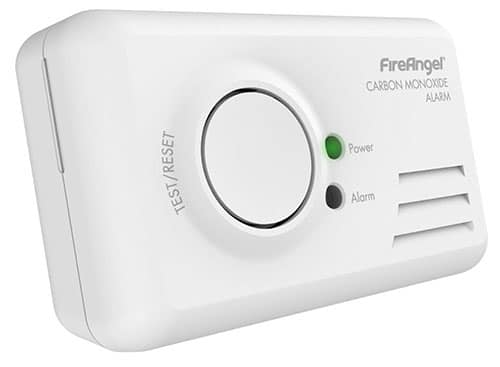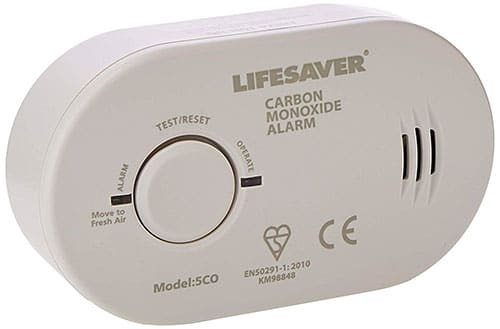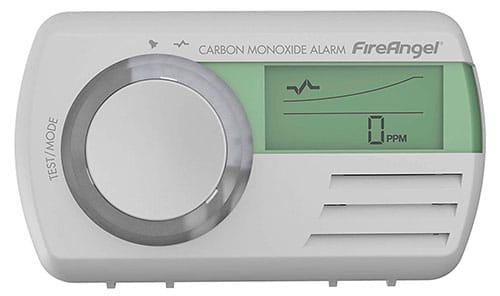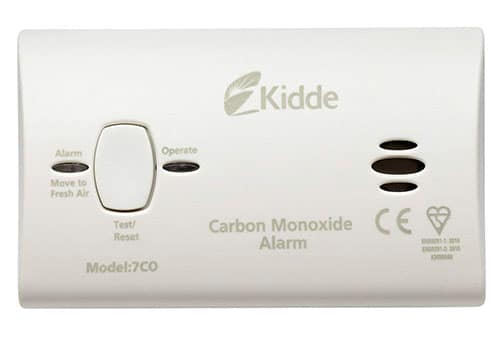Although you may not want to dwell on the negative sides of things, there are certain dangers you need to be aware of when touring in a caravan. As fuel of some form will be used and burned when you are using your tourer you need to take care. Not only do you need to take suitable precautions when storing and using the fuel overall, you need to be aware of the dangers Carbon monoxide or CO for short, poses.
You probably already know about carbon monoxide and will undoubtedly have some carbon monoxide detectors placed strategically throughout your house. However, just to be clear, we’re going to discuss in the following post what carbon monoxide is, why it’s dangerous, safety tips to avoid carbon monoxide poisoning and how to spot the signs of poisoning by this harmful gas.
We want to ensure you know everything you need to know about carbon monoxide and will also highlight some great products you can use to signal when there may be a danger of carbon monoxide poisoning.
We have picked out four great products, so you don’t need to browse through several pages of Google or Amazon to find the right one for you.
Table of Contents
Best Caravan Carbon Monoxide Detectors
This CO-9B carbon monoxide detector from FireAngel can be either left standing as a more portable device or mounted onto a wall. It comes with a full 7-year warranty and only needs 2 AA batteries. It uses cutting-edge electro-chemical sensing technology that has been designed specifically to pick up on even lower concentrations of CO.
As well as being affordable and relatively easy to use, it comes with a quality stamp of approval for effectiveness as it’s used by more than 90% of the fire and rescue services in the UK.
Another affordably priced and similarly effective carbon monoxide is our next item from LifeSaver. This provides you with continuous monitoring and features an easy to use test and reset button. Much like the product above, this detector can either be mounted to a wall using the included fixings or simply placed on top of a shelf, cabinet or even just a table in your tourer. There are two LEDs, red and green, used to illuminate in different circumstances. The former will light up when there has been CO detected, while the other illuminates to show DC power has been detected.
It also benefits from an end-of-life alarm that warns you to replace it if you’ve had it and been using it for more than 7 years.
With a multi-functional digital screen and the addition of a thermometer, this CO-9D model from FireAngel is a great safety feature for your touring caravan. The alarm sounds at an 85dB when you are within 1m from it. IT benefits from a large silence and test button to stop the alarm when it signals accidentally or when you need to check it is functioning properly.
As is the case with the other FireAngel model, around 90% of the rescue and fire service teams in the UK use their devices.
The last carbon monoxide detector in our guide comes from the highly renowned and popular manufacturer Kidde. Like the others in this post, it provides continuous monitoring for CO, so that you are always protected from it day and night and know when you need to escape your tourer or ventilate it. It can be either mounted to a wall or placed on a shelf, cabinet or tabletop. Compared to the 7-year sensor life offered by the others in this guide, it offers an industry-leading 10 years’ worth of use. This means you get a 40% longer lifespan. As is standard, it features an alarm that sounds for end of life.
There you have it, folks, the four best carbon monoxide detectors for caravans. Carbon monoxide is not something you should take lightly and whenever you are using fuel-burning appliances, there is always a risk of this gas being produced. So, you need to avail yourself of these kinds of detectors and alarms to avoid damage to your health and even death.
After all, the last thing you want is for one of your caravanning adventures to be your last.
What is Carbon Monoxide?
Carbon monoxide is a gas that is produced when fuel is not burned completely, such as petrol, gas or charcoal. Generally, the gas is produced when the appliance you are using has a fault, but sometimes it is just part of the normal functionality. For example, BBQs that are working fine produce CO.
Why is Carbon Monoxide Dangerous?
CO is odourless and colourless, which obviously makes it hard to detect. IT’s also highly poisonous and when you are exposed to high levels of it in the atmosphere, it can kill you very quickly. Even if there is not enough to kill you, smaller levels of this gas can produce symptoms that are very similar to food poisoning or flu. Other symptoms you need to be aware of includes:
- Weakness
- Drowsiness
- Dizziness
- Vomiting and Nausea
- Headaches
CO Safety Tips and Recommendations
Given the dangers surrounding carbon monoxide poisoning, we wanted to run through some important safety tips and recommendations. Many of these are probably self-explanatory and common sense, but we still feel it’s our responsibility to highlight them so that you remain safe and healthy when on the road.
- Regularly service any gas appliances you use in your caravan, so they are always in tip-top working condition
- Avoid using any solid or liquid fuel, charcoal and other gas appliances inside your caravan awning. This includes gas-powered lamps and fridges, that require an appropriate amount of ventilation to stop them producing CO.
- Avoiding cooking any meals of any sort inside your caravan awning. Regardless of what the weather is like, just don’t take the chance.
- Never ever use a diesel, petrol or gas generator inside your caravan or caravan awning. Also make sure that the fumes generated from this kind of equipment does not blow into either your own tourer and/or its awning or anyone else pitched up near you.
- Avoid heating your caravan awning using a fuel-burning appliance. This means kerosene and gas heaters, unless they have been specifically installed into your tourer, are a big no-no. You should only use these kinds of heaters outside where there is plenty of ventilation. Remember, barbecues and stoves are manufactured with cooking in mind, not heating. So, avoid trying to be clever and frugal and use them for the purpose they were designed for.
- Never ever use a BBQ inside your caravan or caravan awning. Even if your BBQ is cooling down, it is still producing a dangerous level of CO that could kill you and others travelling with you.
How to Spot the Signs of CO Poisoning
As we’ve already noted, CO is tasteless, odourless and invisible. Therefore, as well as taking the precautions above, it helps to be aware of what the signs of CO poisoning are.
Symptoms of poisoning includes:
- Shortness of breath
- Stomach pains
- Confusion
- Tiredness
- Feeling nauseous
- Dizziness
- Headaches
When you are exposed to higher concentrations of CO, the symptoms are more serious and includes:
- Loss of coordination
- Vertigo, feeling like the environment around you is spinning
- Feelings of intoxication
- Increased heartrate
- Seizures
- Breathlessness
- Unconsciousness that eventually can lead to death



